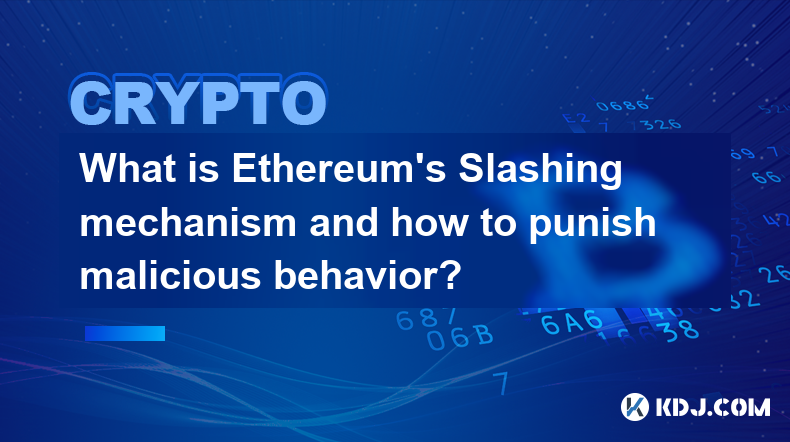-
 Bitcoin
Bitcoin $95,665.2746
-2.66% -
 Ethereum
Ethereum $2,642.4824
-3.34% -
 XRP
XRP $2.5611
-4.84% -
 Tether USDt
Tether USDt $0.9993
-0.09% -
 BNB
BNB $644.7297
-2.03% -
 Solana
Solana $167.8633
-3.62% -
 USDC
USDC $1.0000
0.01% -
 Dogecoin
Dogecoin $0.2386
-5.75% -
 Cardano
Cardano $0.7608
-5.13% -
 TRON
TRON $0.2367
-4.34% -
 Chainlink
Chainlink $17.3548
-4.97% -
 Avalanche
Avalanche $24.5268
-2.02% -
 Sui
Sui $3.2624
-4.65% -
 Stellar
Stellar $0.3254
-5.31% -
 Litecoin
Litecoin $127.5114
-0.89% -
 UNUS SED LEO
UNUS SED LEO $9.7544
0.20% -
 Toncoin
Toncoin $3.5668
-1.32% -
 Hedera
Hedera $0.2118
-3.79% -
 Shiba Inu
Shiba Inu $0.0...01504
-3.23% -
 Hyperliquid
Hyperliquid $24.9579
2.48% -
 Polkadot
Polkadot $5.0874
0.73% -
 MANTRA
MANTRA $7.5828
-5.16% -
 Bitcoin Cash
Bitcoin Cash $313.8322
-3.71% -
 Ethena USDe
Ethena USDe $0.9978
-0.18% -
 Bitget Token
Bitget Token $4.7273
5.24% -
 Dai
Dai $1.0000
0.00% -
 Uniswap
Uniswap $8.7029
-6.85% -
 Monero
Monero $228.7591
-0.51% -
 NEAR Protocol
NEAR Protocol $3.2979
-5.08% -
 Pepe
Pepe $0.0...09176
-4.56%
What is the future development direction of Ethereum and what are the important plans?
Ethereum's transition to Proof-of-Stake through "the Merge" sets the stage for enhanced security, reduced energy consumption, and future scalability upgrades.
Feb 19, 2025 at 04:31 pm

Key Points:
- Ethereum's transition to Proof-of-Stake: The Merge and beyond
- Ethereum 2.0 and the roadmap for scalability improvements
- Decentralized applications (dApps) and smart contract ecosystem growth
- Enterprise adoption and use cases for Ethereum
- Developments in the Ethereum Name Service (ENS)
- Layer-2 solutions and their impact on Ethereum's scalability
Article Content:
1. Ethereum's Transition to Proof-of-Stake: The Merge and Beyond
Ethereum's transition to Proof-of-Stake (PoS) has been a highly anticipated event within the cryptocurrency community. Known as "the Merge," this upgrade aims to reduce Ethereum's energy consumption significantly and make its network more secure. By switching from a Proof-of-Work (PoW) mechanism to PoS, Ethereum will transition from a process that relies on computational power to a system where validators are selected based on their stake in the Ethereum network.
The Merge is expected to bring numerous benefits, including:
- Increased security: PoS requires validators to stake their ETH, creating a financial incentive to act honestly and maintain the network's integrity.
- Reduced energy consumption: PoS consumes significantly less energy than PoW, addressing environmental concerns associated with blockchain technology.
- Enhanced scalability: The Merge lays the foundation for future scaling solutions, such as sharding, which will increase Ethereum's transaction capacity.
Once the Merge is complete, Ethereum will enter a new phase of development known as Ethereum 2.0.
2. Ethereum 2.0 and the Roadmap for Scalability Improvements
Ethereum 2.0 is a comprehensive roadmap for scaling the Ethereum network while maintaining its security. This roadmap involves a series of upgrades to the network, including sharding, rollups, and a hybrid consensus mechanism.
- Sharding: Sharding divides the Ethereum blockchain into smaller, more manageable pieces called "shards." This partitioning allows for parallel processing of transactions, significantly increasing the network's throughput.
- Rollups: Rollups bundle multiple transactions together and process them off-chain. They then publish a single aggregated transaction on the Ethereum main chain. Rollups offer a cost-effective way to reduce gas fees and improve transaction speed.
- Hybrid consensus mechanism: Ethereum 2.0 will implement a hybrid consensus mechanism that combines PoS with PoW. This hybrid approach provides a balance between security, scalability, and decentralization.
These improvements aim to increase Ethereum's transaction capacity by several orders of magnitude, enabling it to handle the growing demand for decentralized applications.
3. Decentralized Applications (dApps) and Smart Contract Ecosystem Growth
Ethereum's primary value proposition lies in its ability to host decentralized applications (dApps) and smart contracts. DApps are applications that operate on a blockchain, bypassing centralized intermediaries and offering greater transparency, security, and censorship resistance.
The Ethereum ecosystem has witnessed exponential growth in dApp development, covering various sectors such as decentralized finance (DeFi), non-fungible tokens (NFTs), gaming, and supply chain management. This vibrant dApp ecosystem has attracted users and investors alike, contributing to Ethereum's adoption and value.
Smart contracts play a crucial role in dApp functionality, enabling the creation of autonomous and verifiable agreements between parties. Ethereum's Turing-complete programming language provides developers with immense flexibility to build complex and innovative smart contracts.
4. Enterprise Adoption and Use Cases for Ethereum
Beyond its relevance in the crypto realm, Ethereum has also garnered attention from enterprise organizations recognizing its transformative potential. Ethereum's enterprise adoption is driven by its ability to:
- Streamline supply chain management: Ethereum allows for the creation of transparent and immutable records for supply chain transactions, enhancing efficiency and traceability.
- Automate business processes: Smart contracts can automate complex business processes, reducing manual labor and errors, and increasing transparency.
- Create innovative products and services: Ethereum enables the development of new products and services, such as decentralized identity management, loyalty programs, and data sharing platforms.
Organizations across various industries, including finance, healthcare, and manufacturing, are exploring Ethereum's use cases to enhance their operations.
5. Developments in the Ethereum Name Service (ENS)
The Ethereum Name Service (ENS) is a decentralized naming system that maps human-readable names (e.g., "example.eth") to Ethereum addresses. ENS simplifies the process of interacting with Ethereum addresses, reducing the risk of errors and enhancing user experience.
Recent developments in ENS include:
- ENS integration: ENS integration has expanded to popular wallets and dApps, making it easier for users to use ENS names across different platforms.
- ENS domains: ENS domains have become tradable as NFTs, creating a new asset class within the Ethereum ecosystem.
- Subdomains: ENS subdomains provide a hierarchical naming structure, allowing users to create customized subdomains within their ENS domain.
These advancements make ENS a vital component of Ethereum's user-friendly interface.
6. Layer-2 Solutions and Their Impact on Ethereum's Scalability
Layer-2 solutions are protocols built on top of Ethereum that provide additional scalability without compromising security or decentralization. These solutions process transactions off-chain before finalizing them on the Ethereum main chain.
Notable layer-2 solutions include:
- Optimistic rollups: Optimistic rollups assume transactions are valid unless proven otherwise, providing quick and cheap transactions.
- ZK rollups: Zero-knowledge rollups verify transaction validity through cryptographic proofs, ensuring maximum security without sacrificing scalability.
By leveraging layer-2 solutions, developers can build dApps with improved transaction speeds and lower gas fees, ultimately enhancing Ethereum's overall scalability.
FAQs:
- When will the Merge occur? The Merge is expected to take place in 2023.
- What is the impact of the Merge on ETH prices? The Merge is widely anticipated to have a positive impact on ETH prices due to increased investor confidence and reduced issuance of new ETH.
- What is the roadmap for Ethereum 2.0? Ethereum 2.0 is a multi-phased roadmap that includes upgrades such as sharding, rollups, and a hybrid consensus mechanism.
- What are the most significant dApps currently running on Ethereum? Notable dApps on Ethereum include Uniswap, Aave, and Chainlink.
- How is ENS used in the Ethereum ecosystem? ENS provides human-readable names for Ethereum addresses, simplifying user interactions and reducing error risks.
Disclaimer:info@kdj.com
The information provided is not trading advice. kdj.com does not assume any responsibility for any investments made based on the information provided in this article. Cryptocurrencies are highly volatile and it is highly recommended that you invest with caution after thorough research!
If you believe that the content used on this website infringes your copyright, please contact us immediately (info@kdj.com) and we will delete it promptly.
- SEC Set To Drop Coinbase Lawsuit, a ‘Hugely Vindicating’ Moment for the Crypto Industry
- 2025-02-22 06:20:24
- AcreBTC Raises $4M to Expand Bitcoin Compounding Services, Unveils Public dApp Launch
- 2025-02-22 06:20:24
- Quantum Computing Threatens Bitcoin Sooner Than Expected
- 2025-02-22 06:20:24
- Bitcoin Price Rebounds Above $95K with Strategy₿’s $2B Offering – Web3Bay Raises $200K in 24 Hours
- 2025-02-22 05:30:24
- The SEC Is Ending Its Case Against Coinbase, a Harbinger of Lighter Regulation of Digital Assets Under the Trump Administration
- 2025-02-22 05:30:24
- Apex Fusion Unveils Blockchain Network and Native Token AP3X
- 2025-02-22 05:30:24
Related knowledge

What is Ethereum’s Slashing mechanism and how to punish malicious behavior?
Feb 20,2025 at 03:08am
Key PointsOverview of slashingDifferent types of slashing in EthereumIncentives and consequences of slashingIdentifying and reporting slashed validatorsOngoing discussions and potential improvementsEthereum's Slashing Mechanism: Punishing Malicious BehaviorEthereum's slashing mechanism is an essential tool for ensuring network security and punishing mal...

What is the verifier node of Ethereum and how to become a verifier?
Feb 19,2025 at 06:00pm
The Verifier Node of Ethereum: A Comprehensive GuideKey Points:What is a Verifier Node?How to Become a Verifier NodeResponsibilities and Rewards of a Verifier NodeMinimum Requirements for Becoming a Verifier NodePotential Difficulties in Running a Verifier Node1. What is a Verifier Node?A Verifier Node is an independent entity on the Ethereum network th...

What is Ethereum’s staking, and how to participate and earn money?
Feb 19,2025 at 04:37pm
Key Points:Understanding Ethereum's Staking MechanismSteps to Participate in StakingBenefits and Rewards of StakingSecurity and Risk ConsiderationsTechnical Requirements and Hardware OptionsPotential Challenges and Troubleshooting TipsFAQs on Ethereum StakingWhat is Ethereum's Staking?Proof-of-Stake (PoS) is a consensus mechanism used in blockchain netw...

What is Ethereum’s DAO (Decentralized Autonomous Organization) and how does it work?
Feb 20,2025 at 03:12am
Key PointsDefinition and Structure of a DAOGovernance and Decision-Making in DAOsBenefits and Use Cases of DAOsChallenges and Limitations of DAOsWhat is Ethereum's DAO (Decentralized Autonomous Organization) and How Does It Work?Definition and Structure of a DAOA Decentralized Autonomous Organization (DAO) is an innovative governance and management fram...

What is Ethereum's multi-signature wallet and how to improve security?
Feb 20,2025 at 02:18pm
Key Points:Understanding the Concept of a Multi-Signature WalletBenefits and Drawbacks of Multisig WalletsRequirements for Setting Up a Multisig WalletStep-by-Step Guide to Generating a Multisig WalletImplementing Strategies for Enhanced Security1. Understanding the Concept of a Multi-Signature WalletA multi-signature (multisig) wallet in the Ethereum e...

What is Ethereum's oracle and how to provide data for smart contracts?
Feb 21,2025 at 01:30am
Key Points:Understanding the concept of oracles in EthereumExploring different types of oraclesDetailed guide on how to provide data for smart contractsAddressing potential challenges and considerationsWhat is Ethereum's Oracle?Oracles are crucial components in the Ethereum ecosystem, enabling smart contracts to access real-world data and off-chain even...

What is Ethereum’s Slashing mechanism and how to punish malicious behavior?
Feb 20,2025 at 03:08am
Key PointsOverview of slashingDifferent types of slashing in EthereumIncentives and consequences of slashingIdentifying and reporting slashed validatorsOngoing discussions and potential improvementsEthereum's Slashing Mechanism: Punishing Malicious BehaviorEthereum's slashing mechanism is an essential tool for ensuring network security and punishing mal...

What is the verifier node of Ethereum and how to become a verifier?
Feb 19,2025 at 06:00pm
The Verifier Node of Ethereum: A Comprehensive GuideKey Points:What is a Verifier Node?How to Become a Verifier NodeResponsibilities and Rewards of a Verifier NodeMinimum Requirements for Becoming a Verifier NodePotential Difficulties in Running a Verifier Node1. What is a Verifier Node?A Verifier Node is an independent entity on the Ethereum network th...

What is Ethereum’s staking, and how to participate and earn money?
Feb 19,2025 at 04:37pm
Key Points:Understanding Ethereum's Staking MechanismSteps to Participate in StakingBenefits and Rewards of StakingSecurity and Risk ConsiderationsTechnical Requirements and Hardware OptionsPotential Challenges and Troubleshooting TipsFAQs on Ethereum StakingWhat is Ethereum's Staking?Proof-of-Stake (PoS) is a consensus mechanism used in blockchain netw...

What is Ethereum’s DAO (Decentralized Autonomous Organization) and how does it work?
Feb 20,2025 at 03:12am
Key PointsDefinition and Structure of a DAOGovernance and Decision-Making in DAOsBenefits and Use Cases of DAOsChallenges and Limitations of DAOsWhat is Ethereum's DAO (Decentralized Autonomous Organization) and How Does It Work?Definition and Structure of a DAOA Decentralized Autonomous Organization (DAO) is an innovative governance and management fram...

What is Ethereum's multi-signature wallet and how to improve security?
Feb 20,2025 at 02:18pm
Key Points:Understanding the Concept of a Multi-Signature WalletBenefits and Drawbacks of Multisig WalletsRequirements for Setting Up a Multisig WalletStep-by-Step Guide to Generating a Multisig WalletImplementing Strategies for Enhanced Security1. Understanding the Concept of a Multi-Signature WalletA multi-signature (multisig) wallet in the Ethereum e...

What is Ethereum's oracle and how to provide data for smart contracts?
Feb 21,2025 at 01:30am
Key Points:Understanding the concept of oracles in EthereumExploring different types of oraclesDetailed guide on how to provide data for smart contractsAddressing potential challenges and considerationsWhat is Ethereum's Oracle?Oracles are crucial components in the Ethereum ecosystem, enabling smart contracts to access real-world data and off-chain even...
See all articles

















































































